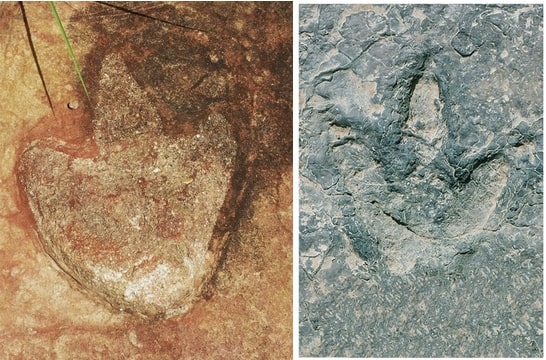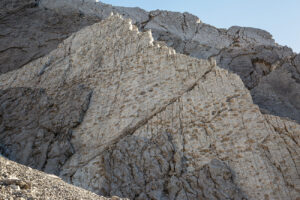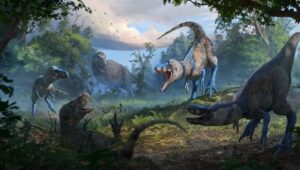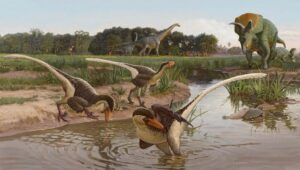Paleontologists have discovered sets of dinosaur tracks that start and end 6,000 kilometers apart on different sides of the Atlantic Ocean.
The 260 fossilized prints are split across ancient riverbeds in Brazil and Cameroon in Africa and are about 120 million years old. Most come from three-toed theropods, carnivorous dinosaurs with bird-like feet. A few others belong to sauropods and ornithischians.
The tracks highlight how different Earth’s geography was in the Cretaceous. At the time, the ur-continents of Gondwana and Pangea had begun to move apart but were still within touching distance. The two riverbeds were just 1,000km away from each other, and the dinosaurs that made the tracks could walk directly between the nascent continents of South America and Africa. Nowadays, that stroll would involve a 6,000km ocean swim.
“One of the youngest and narrowest geological connections between Africa and South America was the elbow of northeastern Brazil nestled against what is now the coast of Cameroon along the Gulf of Guinea,” said Louis Jacobs, lead author of a new paper, said in a statement. “The two continents were continuous along that narrow stretch, so animals on either side…could move across it.”
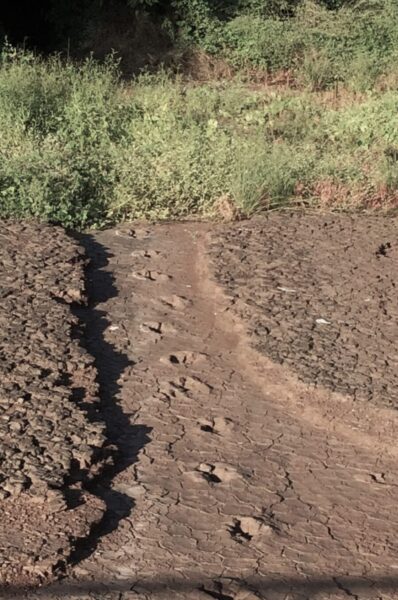
Theropod footprints in the Sousa Basin. Photo: Ismar de Souza Carvalho
The great break-up had begun
Gondwana started to break away from Pangaea 140 million years ago as the tectonic plates between South America and Africa moved away from each other. As the Earth’s crust tore apart, magma rose from the Earth’s mantle to the surface, creating a new oceanic crust that became the South Atlantic Ocean.
Jacobs says the dinosaur tracks are nearly identical in age, shape, and context. By that, he means signs of the tectonic split are visible in the two dino-print locations. Both feature structures known as half-graben basins, which form when rifts open in the Earth’s crust. The half-graben basins in Cameroon and Brazil contain ancient river sediments, fossilized pollen around the same age, and matching footprints.
“These river valleys could provide specific avenues for life to travel across the continents,” Jacobs explained.
Dinosaur prints are not rare, but these sites tell us something about their behavior. They traveled great distances along these river basins, whose rainforest environment was perfect for these dinosaurs.
“Imagine a lush, open basin with vegetation for the herbivores, and carnivores following,” said co-author Lawrence Flynn.
